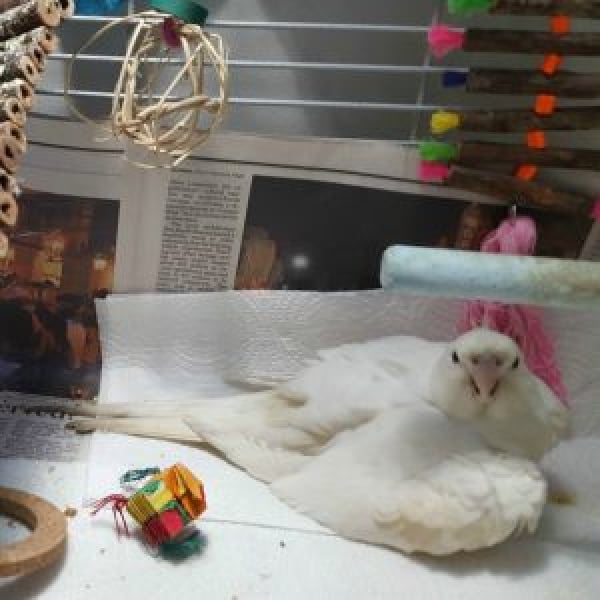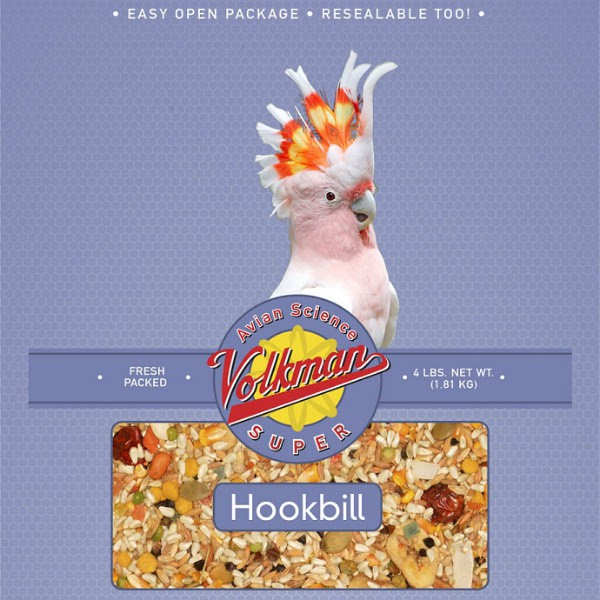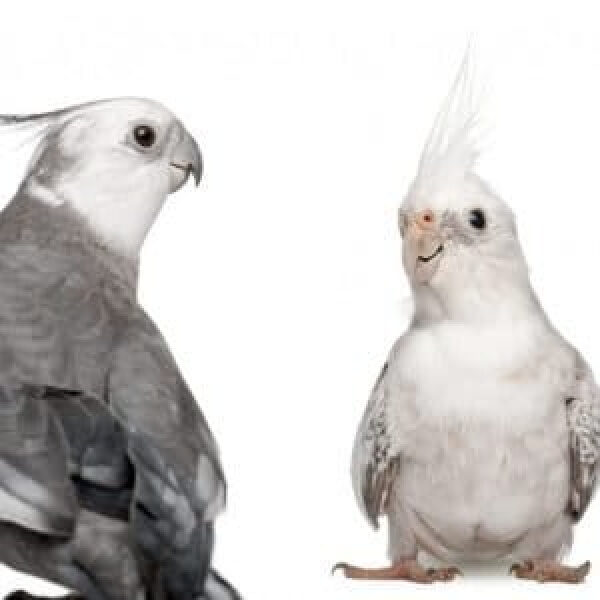
Hormonal Changes Are Coming to Your Bird This Spring What’s Your Plan?
Last Updated on by Mitch Rezman
Americans have the ACLU – Captive birds in America have Windy City Parrot.
Part of a call from Hawaii at the Birdie Boutique
“I suggest72 hours of constant light, meaning the bird would be in its cage for 3 days, with the lights on”.
Cage birdkeepers response “she’ll never go for something like that“
My email response
As an advocate for pet birds, I wanted to follow up on your lovebird’s reproductive issues.
If a child is sick, he or she does not determine whether or not to accept care.
Although you state your bird would “have nothing to do with it” – she can easily be locked in a cage for three days for her own good so as to extend her life.
I appreciate that you are supplementing her with calcium but the depletion of calcium is a small part of the nutritional deficiencies that an egg layer has to deal with. The production of eggs requires caloric energy derived from protein which is diverted from things like feather growth and muscle strength.
re video above: Note lack of any enrichment/foraging opportunities in the cage. The bird has nothing to do but stew about it’s a miserable life. I’d be pissed too.
In many cases, there is abdominal fluid that builds up in the bird’s abdomen. Has your vet checked for this? Dr. Byron extracted (with a syringe and hypodermic needle, approximately 25 mL (25 g) – or about 20% of the cockatiel’s weight) every week – for 12 weeks from Popcorn. This can be a common problem with prolific egg-laying birds.
There is also the possibility of egg binding meaning the egg doesn’t make it through your bird’s reproductive system completely and dystocia when there is an obstruction blocking the egg from being laid.
Clearly, I am passionate about this – I just want your lovebird to be healthy
I have blogged about prolific egg laying and hormonal issues here: https://goo.gl/WRu2Zx and here: https://goo.gl/SB0nlW
I get it, removing the paper from the “grate” so she doesn’t shred it to make nesting material but it’s important that she be offered an alternative to do something with her beak throughout the day.
We want to combine food and toys creating a fulfilling enrichment experience that will take her mind off making babies. This is a simple idea that is very effective. It is accepted by most birds:
We paid our due diligence on MangoPet tabletop stands which I feel would be ideal for your lovebird. MangoPet stands are produced in the USA. Unfortunately from what is probably the most distant point in the US from Hawaii – Rhode Island.
It would be approximately $80 and $90 in additional shipping charges to Hawaii and we have a ticket in with MangoPet to determine the current production lead time as they are all handmade.
We will let you know as soon as we hear back from Erik – The founder of MangoPet.
Best
Couple of other things to keep in mind – Lupron – has a 50-50 success rate – I’m going to guess that you have no artificial lighting over your bird’s cage and the next 90 days you’re going into spring with the days getting longer which triggers – egg laying.
Because you live in North America the light cycle your bird is perceiving through its Pineal gland is scrambling her circadian clock – triggering the eggs
Make sure your bird has no places to hide like bird tents, under the couch or in a cabinet somewhere seeking a dark, brooding area.
Reduce the food that you offer – this is very important because if the bird sees an abundance of food she feels she will be able to easily feed new babies so you want to back your food dish down to about a quarter dish full at a time. Removing the food at night is a good option.
And again I would advocate that you ask your vet if he or she checked for abdominal fluids that build up in the abdomen of prolific egg laying birds pressing against organs and air sacs.
Birds do not pant because they don’t have a diaphragm like mammals – so watch your birds chest to see if it does begin to look like a slight panting of any sort which would indicate abdominal fluid which can be tapped but only by a certified avian vet – I watch them pull 20% of my cockatiel’s weight out of her abdomen every week for 12 weeks
best of luck
new subject – green cheek amazon.
On 12/11/16 in our post “Is human food killing your bird” I mistakenly denied the existence of the – green cheek amazon not knowing it was aka red-crowned amazon and aka Mexican red-headed parrot.
I have manned up.
Tighten your seat belt. We’re going off road
https://www.youtube.com/watch?v=Lo4HOmqd9fo
In the late sixties – “The Prisoner” debuted on TV – way ahead of it’s time going on the be a cult classic (17 episodes). I have watched every episode 3 – 6 times in my life. Part of the show’s “collection” are interviews with Patrick McGoohan, the protagonist and series creator.
What made the show unusual according to McGoohan, “there was no script”. The cast and crew would show up and they’d just work through the story/episode that Patrick came up with for the week.
And that my friends is how we prep the Birdie Brunch. Harvest the new organic, non-GMO content we’ve grown this week. Lay it out in our digital kitchen, chop it, slice, it dice it. Taste test it a hundred times and then put it into the digital oven with the timer set for 7:00 AM where ever you are on the planet. Now you know.
From Lisa W. Dec 11, 2016 10:42 am
I also have a ‘wild caught’ green cheek amazon.
Your bird is flying at you for one of two reasons.
Number one, your bird is male and is being territorial aggressive to show you when you walk down in the room that HE is boss.
My bird does this but it’s magnified every year when it’s spring and he would normally have a mate, and a nest to defend. It’s natural in the wild.
My vet makes sure this time of year wings are clipped and he sleeps in his cage not so I have to let him out, denoting I’m boss not him. Also,
When out of the cage and throughout the day he has no access to perches (hutches etc) that are ABOVE my head. This establishes domination because I am taller than him. If this doesn’t work, wing clipping all year might be encouraged.
The 2nd reason your amazon may be flying at your head is not to scare or hurt you, but to literally land on your head. My male is very connected to me as I rescued him from an animal attack as a baby. When he is scared or insecure he always wants on my head and buries his feet in my hair for warmth and comfort. If something scares him, even with clipped wings which I have a light clipping so he can fly but not well, he flies on him head and stays there until he feels safe.
When he is scared or insecure he always wants on my head and buries his feet in my hair for warmth and comfort. If something scares him, even with clipped wings which I have a light clipping so he can fly but not well, he flies on him head and stays there until he feels safe.
Hope this helps.
I would also think about my relationship with my bird. Male Amazons have a normal inclination toward aggression which can easily be curved with the steps above, but if your bird feels threatened by you for any reason and your relationship has deteriorated, he may be threatened by you and is flying at you because in reality, he is experiencing fear. There are my articles that can be found on improving that relationship so your pet is loving again.
Hi Lisa I apologize for my belated response
– thank you for this information – I will pass this on the caregiver for the GCA.- I think you are quite spot on
MitchR
Written and Aggregated by Mitch Rezman
Approved by Catherine Tobsing
Your Zygodactyl Footnote
Author Profile
Latest entries
 The Traveling BirdJune 26, 2025Can You Name 5 Parrot Species That Are Living Wild in the USA?
The Traveling BirdJune 26, 2025Can You Name 5 Parrot Species That Are Living Wild in the USA? Bird BehaviorJune 26, 2025How is it Parrots Are Problem Solvers Social Animals and Even Use Tools?
Bird BehaviorJune 26, 2025How is it Parrots Are Problem Solvers Social Animals and Even Use Tools? Bird & Parrot AnatomyJune 25, 2025How a Tiny Chemical Modification Makes Parrots Nature’s Living Paintings
Bird & Parrot AnatomyJune 25, 2025How a Tiny Chemical Modification Makes Parrots Nature’s Living Paintings PigeonsJune 20, 2025How Do Parrots Thrive in Cities Outside Their Native Habitats?
PigeonsJune 20, 2025How Do Parrots Thrive in Cities Outside Their Native Habitats?
This Post Has 3 Comments
Leave a Reply
You must be logged in to post a comment.



nuclearnco
16 Jan 2017All right Mitch, I’m prepared to be lectured…. We have had several birds in the past; 2 Sun Conures (OMG what were we thinking), A U2, Nan-day, 3 Parakeets, a budgie, green conure, 2 or 3 dozen finches, our CAG – Enzo and a couple of foster Greys. We blood tested every bird except the finches and Enzo. I knew, for the most part, which finches were the egg layers, so we isolated the females that were too busy egg laying.
Due in part to a medical retirement from the Army and forced move; the birds getting old; or finding new homes with people that really wanted one or another AND having given us a report on the bird they were getting (Necessary for the Sunnies and U2) we are now down to just our grey.
We took for granted what the breeder said was the sex of Enzo. He was young and would squawk like a turkey when you touched his tail much less clip a toe too much or pull a feather in order to get a blood DNA test. We didn’t want to mess up the trust-relationship we were working on and the breeder told us. He now lets me do pretty much anything I want to and would hate to screw that up.
We refer to him as a him and I sill believe that he is male. He tolerates my wife but he is very much so most excited when I am in the room or holding him. Is it normal for a male bird to prefer guys…or does it not really matter?
Is there anything that sorta identifies male from female without obvious differences like the Eclectus color differentiation? He is now 4 years old and never really became an obnoxious teen at 2 like most have told us happen. We work with him nearly every day.
Lastly, do you have any … good…. links .. on training AND species specific details such as IDEAL life style..foods..mental simulation toys that most replicate what they have in the wild where they naturally reside?
I have studied as much as I could find on the net. I have watched as many programs and documentaries that I could find. Most of what I found is birds in general or things that don’t feel right. I don’t count opinions as fact…
We read every sunday bird brunch, we have changed many things we were doing or not doing and on occasion, expressed our experiences with or without our opinions. We clip but only enough to prevent him from going up, he can go out and down. With a careless teen and 2 other exotics having escaped in our town we have become paranoid Enzo would get out so now we clip just enough to prevent him from getting out of the yard if the worst was to ever happen..
As you say, your a caged/pet bird advocate. I am a veteran advocate and as one advocate to another….You play a big, if not critical, role for the life and lifestyle of our birds. Thank You. And any advice or assistance you provide will be greatly appreciated.
I will talk to our avian doc about getting a blood sample, though, I’m not so sure it is really absolutely required just for sexing…I will if it is necessary for treatment of a medical problem… as I really have some faith that the specialty shop/breeder in North Carolina where we adopted Enzo.. was hopefully telling the truth. It would be a shame that there were shady shops out there. Thanks Mitch.
WindyCityParrot
16 Jan 2017thank you for the kind words – nuclearnco – about 20% of parrots are dimorphic – like eclectus and red bellied parrots where can tell the difference between sex. I don;t think birds can differentiate human sex – they just want t mate – We’re going through that with Peaches now – she’s still lunging at Catherine but it’s getting better
I get it about the teens – it’s good you’ve struck a balance
here’s a bunch of clicker training videos https://windycityparrot.com/blog/2016/11/09/clicker-training-videos/
let me know if you need more info
mitchr
Dawn Harris
25 Jan 2017Thanks for the advice on egg laying Mitch. I have two female peach-faced lovebirds and they are chronic egg layers. I’ve followed the advice of my avian vet (even had a second opinion from a different vet) and other advocates of reducing food and giving them nothing to shred, no tents, 13-14 hours of quiet dark sleep…all of it. Nothing has changed their driven reproductive system. I also tried the Light Therapy recommended by you and Harrison’s recently. In fact they were both exposed to bright light 24/7 for five days and nights. I was crushed when 15 days later an egg was laid on the bottom on their cage. So off to the vet again this past monday with fluid build up, just as Popcorn experienced, in one of the lovebirds. She’s on metacam for inflammation and calcionate suspension. I only share to say that for some birds it appears that nothing works. I’ve even asked about a hysterectomy for them but quickly found out from my vet that that isn’t an option due to the location of the ovaries near major blood sources and other organs. I envy those who have been successful at stopping this potentially life-threatening condition in our birds.